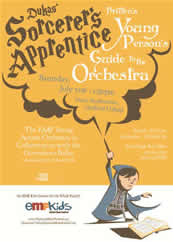Kyle Abraham first appeared in Durham at the American Dance Festival 2012, with his engaging work, “Radio Show.” The ADF brought him back in 2013, with an intriguing work, “Pavement,” that again demonstrated the beauty of his style – and certain weaknesses in his choreography. Now in Durham for the third time, for a Duke residency and two public Duke Performances, Abraham reiterates his interest in black cultural themes – and demonstrates again that his ideas are outpacing his choreographic craft. Disappointingly, he himself did not dance, leaving the weaknesses unmasked without the cover of his marvelous movement.
The opening work, “When the Wolves Came In,” was visually interesting, but I could not fathom its topical content. There was some fine dancing… but the segments were short and did not build dramatically. If the wolves were there, I couldn’t recognize them, and I could not tell if it mattered whether the white dancers were white, or if this was “color blind” casting. The most memorable things (and this is damning) about the piece were the costumes by Reid Bartelme. They weren’t elaborate, but each dancer had a costume color keyed to his or her skin tones, which ranged from ashy to reddish to umber, and a conical wig to match. Eventually, the wigs came off, and their removal generated a sense of nakedness, of vulnerability, but that didn’t go anywhere, either.
The same puzzling projection of a photo-based work by Glenn Ligon, that was used in the first piece, filled the back wall for “Hallowed,” with an additional overlay of clouds, and one could feel strongly the underlying influence of choreographers from Alvin Ailey to Bill T. Jones, to Ron K. Brown and Robert Battle. The music was two songs – one more of a spoken poem – from a Smithsonian Folkways recording, Voices of the Civil Rights Movement: Black American Freedom Songs 1960-1966. The dance was pretty long, but had so little going on, dramatically speaking, that I had to forcibly reel in my mind again and again. There were beautiful passages of dancing – Abraham’s style is just delicious, with its long-reaching arms, sinuous risings and turnings, and light leaps – but the choreographer has not yet gotten those long arms around the theatrical part of dance theatre.
Post-intermission, the evening’s longest work, “The Gettin’,” was even harder to stay with. The Ligon backdrop was overlaid this time with chopped and changing images that appeared to be from South Africa during Apartheid. Attempting to interpret these larger than life images distracted greatly from the dancing, which was also confusing, because in this piece I think skin color did matter. The music was Robert Glasper‘s interpretation of We Insist! (Max Roach’s Freedom Now Suite). Why, I kept wondering, did Abraham not use the original music? It doesn’t get much better than Max Roach on drums. And what was up with the repeated use a single dancer walking downstage and standing motionless with back turned to audience?
Perhaps the overall lack of originality was responsible for the emptiness at the center of all three pieces. Abraham is a MacArthur Fellow, but the genius required to cut and paste past art and history into something new was not on view in this program.
You can read the CVNC review of the 2012 performance of “Radio Show” here as well as this reviewer’s blog on the performance of “Pavement” here.
“When the Wolves Came In” repeats February 20. See our sidebar for details.











